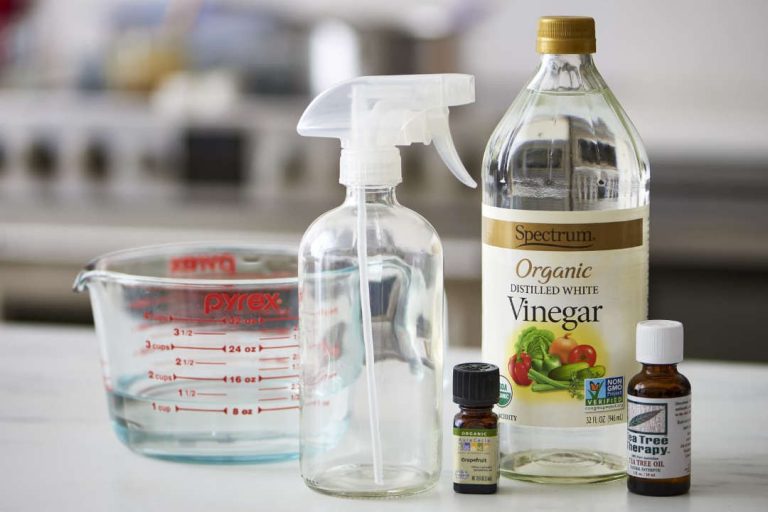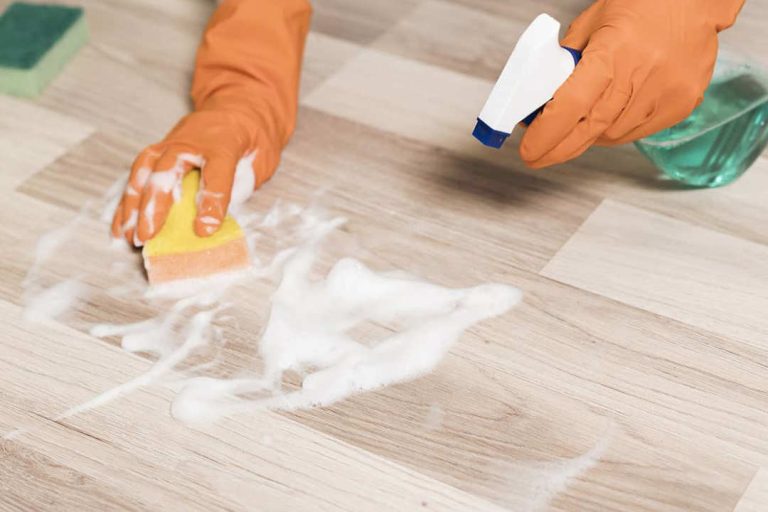If you ask me, how do you clean kitchen cabinets without removing the finish, my one-line answer is
cleaning your kitchen cabinets without removing the finish is a simple and effective process. By using mild dish soap, warm water, microfiber cloths, and some elbow grease, you can maintain the appearance and longevity of your cabinets.
But, in reality, cleaning kitchen cabinets can be a challenging task, especially when you want to preserve the finish and keep them looking as good as new. The build-up of grease, dirt, and grime over time can make your cabinets appear dull and unattractive. However, with the right techniques and products, you can maintain the pristine appearance of your cabinets without damaging their finish. In this blog post, we’ll discuss effective methods for cleaning kitchen cabinets while keeping their integrity intact.
Choose the Right Cleaning Solution
Selecting an appropriate cleaning solution is essential to avoid removing or damaging your cabinet’s finish. Opt for gentle, non-abrasive cleaners that are specifically designed for wood surfaces. These mild cleaners can remove dirt and grease effectively without affecting the finish or discoloring your cabinets.
A simple homemade cleaner can be made by combining equal parts of white vinegar and warm water. The vinegar will cut through grease while being gentle on the surface. For extra stubborn stains, you can add a few drops of dish soap or a teaspoon of baking soda to the mixture.
Test Before You Clean
Before applying any cleaning solution to your cabinets, it’s important to test it on a small, inconspicuous area first. This ensures that the cleaner won’t damage or discolor your cabinet’s finish. Apply a small amount of your chosen cleaning solution using a soft cloth or sponge and gently rub it on the surface. If there is no adverse reaction after several minutes, it is safe to proceed with cleaning the rest of your cabinets.
Gentle Cleaning Techniques
When cleaning your kitchen cabinets, always use a soft cloth or sponge. Avoid using abrasive materials such as scouring pads or steel wool as they can scratch and damage your cabinet’s finish. To clean your cabinets effectively:
- Start by dusting off loose dirt and debris with a soft brush or microfiber cloth.
- Dip your cloth or sponge into the cleaning solution and wring it out well, so it’s damp rather than soggy.
- Gently wipe down the surfaces of your cabinets, paying attention to handles, edges, and corners where dirt and grime tend to accumulate.
- For stubborn stains or sticky residue, you can apply a little more pressure or use a soft toothbrush to scrub gently.
- Once you’ve cleaned all surfaces, rinse your cloth with clean water and wipe down the cabinets again to remove any residual cleaner.
- Dry each cabinet surface thoroughly with a clean towel or microfiber cloth to prevent water stains.
Regular Maintenance
To keep your kitchen cabinets looking great and prolong their lifespan, it’s important to establish a regular cleaning routine. Wiping down your cabinets once a week with a damp cloth or vinegar solution will help prevent build-up and make deep cleaning less daunting. Set aside time once every few months for a thorough cleaning, using the methods detailed above.
Can I Use Vinegar Instead of Soap?
In today’s world, we are continually seeking alternatives to chemical-laden household products. As we become more eco-conscious and health-aware, one question that often arises is, “Can I use vinegar instead of soap?” The answer may surprise you – yes! Not only does vinegar make a fantastic natural substitute for traditional soaps, but it also boasts several other benefits. Let’s explore why you should consider using vinegar in place of soap in your cleaning routine.
Why Vinegar Makes a Great Soap Substitute?
1. Natural and Non-toxic: Vinegar is an all-natural, non-toxic product. Derived from the fermentation process of various fruits and grains, it contains no harmful chemicals – making it safe for both your health and the environment.
2. A Powerful Cleaner: Vinegar’s high acidity level gives it potent cleaning power. It can cut through grease, dissolve soap scum, and disinfect surfaces – making it an ideal alternative to conventional soaps that can leave behind chemical residues.
3. Cost-effective: Vinegar is an inexpensive product, especially when compared to many specialized cleaning agents; it’s widely available in large quantities at most grocery stores.
How Often Should I Clean My Cabinets?
Cleaning your cabinets may not be the first thing that comes to mind when you think about maintaining a tidy home. However, keeping your cabinets clean is essential to maintaining a healthy living environment and preserving the life and appearance of your cabinetry. So, how often should you clean your cabinets? Let’s delve into the cleaning routine and frequency that works best for maintaining their pristine condition.
Establish a Regular Cleaning Schedule
To keep your cabinets looking their best, a regular cleaning schedule should be established. A basic cleaning routine involves wiping down the cabinet surfaces with a damp cloth or all-purpose cleaner every week or two, depending on how much use they see. This will prevent dust, dirt, and grime from building up, making it easier to maintain their cleanliness over time.
For high-use areas like the kitchen, you may need to clean the cabinet exteriors more frequently – every few days or weekly. Grease splatters and food debris can accumulate quickly in cooking spaces, leading to a grimy finish on the cabinet doors and handles if not addressed promptly.
Incorporate Deep Cleaning Every Few Months
In addition to regular surface cleanings, it’s essential to deep clean your cabinets every three to six months. During these deep cleaning sessions, remove all items from inside the cabinet and give the shelves a thorough wipe-down. This will help eliminate any lingering dust or debris that may have accumulated since your last deep cleaning.
Deep cleaning is also an excellent opportunity to examine your cabinets for any signs of damage or wear. If you notice any issues like chipping paint or damaged hardware, address them as soon as possible to extend the life of your cabinetry.
Don’t Forget About Cabinet Hardware
Cabinet handles and knobs can harbor bacteria and grime due to frequent contact with hands. It’s important to clean these hardware components regularly – about once a month – to keep them looking shiny and germ-free.
Take Note of Daily Usage
The frequency at which you should clean your cabinets highly depends on their daily usage. In high-traffic areas like the kitchen or bathroom, cabinets may require more frequent attention due to exposure to grease, dirt, and moisture. Keep an eye on these areas for signs of buildup or grime and address them as needed.
Pay Attention to The Cabinet Finish
The type of finish on your cabinets also plays a role in determining how often you should clean them. Laminate or painted surfaces can typically be cleaned more frequently than wood finishes without causing damage. However, it’s crucial always to follow the manufacturer’s guidelines for cleaning any specific material.
Check for Signs of Wear
Regularly inspecting your cabinets will help you identify when it’s time for a deep clean. Look out for signs like stains, discoloration, or fingerprints that might indicate a need for attention. If your cabinets are showing these signs, it’s time to get them cleaned.
General Cleaning Guidelines
As a general rule of thumb, most homeowners should clean their cabinets at least once every six months. This frequency ensures that any dirt or grime buildup is addressed before it becomes too difficult to remove. However, if your cabinets are located in high-use areas or if you have small children or pets, you might consider more frequent cleanings – perhaps once every three months.
Is It Safe to Use Furniture Polish on My Cabinets?
When it comes to maintaining the beauty and durability of your wooden cabinets, it’s essential to keep them clean and well-maintained. A common question homeowners ask is whether it’s safe to use furniture polish on their cabinets. In this post, we’ll explore the safety and effectiveness of using furniture polish on your cabinets, along with alternative methods and tips to maintain them properly.
Understanding Furniture Polish
Furniture polish is a liquid or aerosol product designed to clean, protect, and enhance the appearance of wooden surfaces. It often contains a combination of ingredients such as wax, oil, and solvents that help remove dirt, fingerprints, and smudges while leaving a shiny and smooth finish. Common types of furniture polishes include oil-based polishes, wax-based polishes, silicone-based polishes, and all-natural alternatives.
The safety of using furniture polish on your cabinets depends on the type of finish your cabinets have and the ingredients in the specific product you choose. In general, furniture polishes that are specifically formulated for wood and are free of harsh chemicals or abrasives should be safe to use on most types of finished wooden cabinets. However, it’s always best to test a small inconspicuous area first before applying it to the entire surface.
For those with painted or laminate cabinets, it’s important to avoid using furniture polish altogether as it can cause damage or discoloration. Instead, opt for a mild detergent or a cleaning solution specifically designed for these types of surfaces.
Pros of Using Furniture Polish on Cabinets
1. Improved Appearance: By removing dirt and grime from the cabinet’s surface, furniture polish can help bring out the natural beauty of your wood cabinets and give them a renewed shine.
2. Protection: Furniture polish creates a protective barrier against dust, moisture, and scratches. This helps prolong the life of your cabinets by preventing potential damage.
3. Easy Application: Applying furniture polish is generally simple and requires minimal effort. You just need a soft cloth, the product itself, and some gentle buffing.
Cons of Using Furniture Polish on Cabinets
1. Residue Buildup: Some furniture polishes can lead to residue buildup over time, which can make your cabinets appear dull and lifeless.
2. Damage to Certain Finishes: Some finishes or types of wood may be sensitive to certain ingredients found in furniture polishes. This could potentially cause discoloration or other types of damage.
3. Health Concerns: Some people might be sensitive or allergic to specific chemicals used in furniture polishes, leading to skin irritation or other health issues.
Conclusion
In conclusion, cleaning your kitchen cabinets without removing the finish is both possible and essential for maintaining their beauty and longevity. By using gentle cleaning agents such as soapy water or vinegar solution, along with microfiber cloths and soft brushes, you can effectively remove grease, grime, and dust from the surfaces without causing any damage. Remember to always test the cleaning solution on an inconspicuous area before proceeding, and leave the cabinets to air dry for the best results. With some consistent effort and proper care, your kitchen cabinets will continue to look fresh and new for years to come.
- How to Clean Kitchen Floor Grout Naturally: Easy DIY Methods - June 25, 2024
- How to Clean Thermoplastic Kitchen Cabinets Properly: Expert Tips - June 19, 2024
- How to Clean Mica Kitchen Cabinets: A Simple Guide - June 19, 2024






